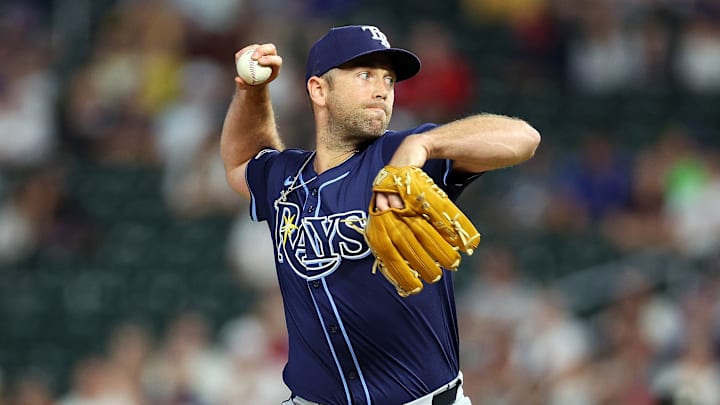It’s never easy to know exactly who will get traded. With two more years of control after this year, Tampa Bay Rays reliever Jason Adam wasn’t necessarily a guarantee to get dealt at the trade deadline. A perfect fit for the New York Mets as a right-handed pitcher with control and some dominant numbers against left-handed hitters (.535 OPS and he has been better against righties!), he was the type of player we would’ve loved to see added to the bullpen.
Adam’s time with the Rays comes to a close with a 2.49 ERA this season and a dazzling 2.30 ERA in 164.2 innings dating back to the start of the 2022 season. One of those rejects the Rays had patience and were able to work their magic on, he was traded to the San Diego Padres for three players who MLB Pipeline rates as worthy of being top 30 prospects with the Rays. Headlining the move was Dylan Lesko who ranks among the top 100.
The hefty price on Adam makes sense with the two and a half years of control, modest hit on the payroll, and talent he’ll bring with him to the Padres. It was an easy pass for the Mets because a similar package of Lesko, Homer Bush Jr., and JD Gonzalez would’ve been a major overpay by New York.
The Padres paid a big price for a pitcher the Mets could have really used
Controllable relief pitchers may not be what we see the Mets finish off their trade deadline with. Ryne Stanek is a rental. Jesse Winker, although not a pitcher, is on an expiring contract, too. These players tend to cost much less. Although each did require the delivery of a top 30 prospect in the deal, each was expendable and worth the price.
Maybe not so with Adam. Lesko rates better among the top 100 prospects than Brandon Sproat and yet it’s hard to imagine the Mets parting with him in any sort of trade deadline move. An equivalent Mets trade might be something along the lines of Sproat, Ronald Hernandez, and Boston Baro. The Rays picked up a lot of youth with Lesko at 20 and Gonzalez at only 18.
The Mets have yet to strike any trade that has gutted the farm. They may be saving those resources for a starting pitcher. Rental relievers seem to be more in the realm of what they will be willing to add. They didn’t reload the farm system for trades like this. A starting pitcher, on the other hand, might be worth it.
